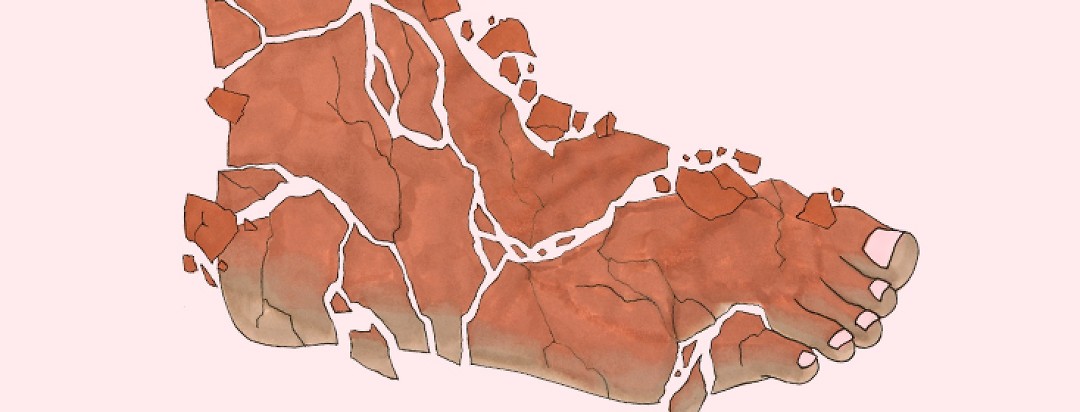The Psoriatic Foot
When psoriasis symptoms impact the feet, it can cause discomfort and trouble walking. But not all itchy, scaly patches on the feet are the same.1
Palmoplantar psoriasis (PP) is the name when any type of psoriasis starts to impact your hands or feet. Palmoplantar pustulosis (PPP) is a specific type of psoriasis that mainly impacts the skin on the hands and feet. It may also be called palmoplantar pustular psoriasis.1
What is palmoplantar psoriasis (PP)?
Psoriasis is the term for skin conditions that cause scaling anywhere on the body. There are many different types of psoriasis. PP is the condition whenever any type of psoriasis affects the hands or feet. Types of psoriasis that can cause PP include:1,2
- Plaque psoriasis
- Guttate psoriasis
- Nail psoriasis
PP is caused by an overactive immune system. With psoriasis, the immune system mistakenly attacks healthy skin cells. This causes the irritated patches. But we do not know why it impacts the hands or feet in some people.1
What is palmoplantar pustulosis (PPP)?
PPP is a specific type of psoriasis. It causes symptoms on the hands and feet. PP can impact people of all ages and genders. PPP is more likely to affect women and people between 20 and 60. People with a history of smoking are more likely to get PPP.2-4
What are the symptoms of PP and PPP?
PP causes irritated patches of skin. These patches can be scaly, flaky, discolored, itchy, or dry. PPP can also cause these scaly patches. However, PPP also causes pus-filled bumps or blisters. These are called pustules.1,2
How are they diagnosed?
The diagnosis process for PP or PPP can look similar. They are both diagnosed by a dermatologist.1,2
The diagnosis process will likely start with a physical exam. They will also go over your medical history. PP and PPP can both run in families, so a dermatologist may ask about your family history. They may also use tests to rule other conditions out. This might be a skin biopsy or an allergy test.1,2
What are the treatment options?
Psoriasis on the feet can impact your ability to work or to do daily activities and can have a huge impact on quality of life. So, it is important to discuss treatment options with your doctor. Treatment for PP and PPP can be similar. Treatments may include:1-3
- Topical treatments – Treatments that are applied to the skin. They might contain steroids, salicylic acid, or coal tar.
- LED light therapy – A type of light therapy that targets affected areas with specific wavelengths of light to reduce inflammation and pain.
- Oral drugs – These are drugs you take and treat skin conditions systemically. This means it treats psoriasis from within the system of the body. These drugs might be biologics, retinoids, or immunosuppressants.
Psoriatic arthritis in the feet
Psoriasis on the feet can also become more challenging if you also have psoriatic arthritis (PsA). PsA causes pain and swelling in your joints. It can affect the feet in several ways. With PsA, the joints in the toes can become inflamed. This may cause sausage-like swelling of the toes.5
Some people with PsA also experience pain at the arch of the foot or in the heel. Pitting, thickening, and lifting of the nail from the nail bed are also signs of psoriatic arthritis of the foot. It can affect 1 or both feet.5
Foot pain from PsA can be overwhelming because it may limit your activities. But it can be managed with lifestyle changes, medicines, and comfortable shoes.5
Community Poll
When it comes to living with multiple health conditions, I've found my:

Join the conversation